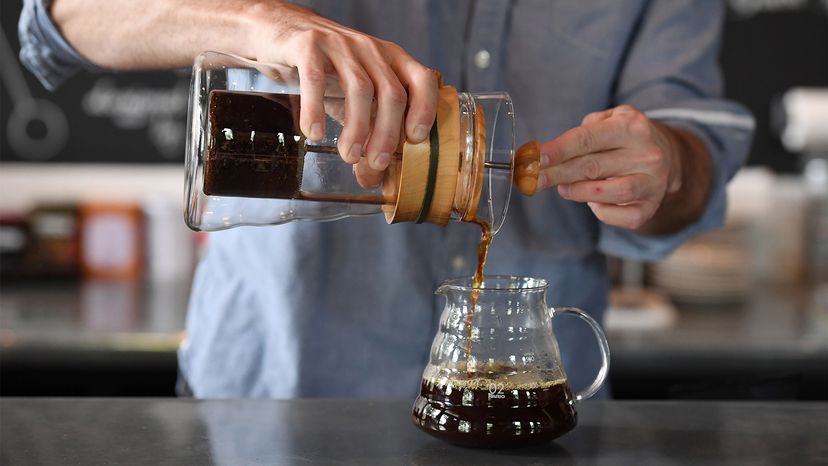“
 “The process for making cold-brew coffee is not the same as that for making iced coffee. And nitro brew? That’s a whole different story. The Washington Post/Getty Images
“The process for making cold-brew coffee is not the same as that for making iced coffee. And nitro brew? That’s a whole different story. The Washington Post/Getty Images
A few weeks ago, I stared up at the menu of my local fancy schmancy caffeine dealer, mouth agape, brain swimming with shameful confusion. I could order an iced coffee. But I could also order a cold brew coffee. Then there was nitro brew coffee. Those ahead of me in line confidently ordered while I clumsily fumbled with my phone, trying to coax a quick answer from Siri. It was humbling.
Even in a coffee capital like the Bay Area (the home of Peet’s, Ritual, Blue Bottle and more), I know I’m not alone in my ignorance. Icy, refreshing, high-voltage beverages come in many forms. Here’s your guide:
Iced Coffee
Classic, simple, straightforward iced coffee is one of those comforting everyday staples that actually is what it claims to be: coffee on ice. There’s no wizardry in the brewing process or temperature regulation. Nope, iced coffee is very literally just regular hot coffee that’s cooled down and poured over ice. There is, however, one little catch: While the brewing process itself is identical to that of hot coffee, most brewers will double the ground coffee they put in the maker so that the resulting concoction isn’t diluted too much as the added ice melts. Another way to circumnavigate the dilution risk is to use ice cubes made from the coffee itself — no extra water, no problem.
Cold Brew
OK, here we go. While "cold brew" may be one of the buzziest phrases in Western culture over the last decade, the beverage itself is nothing new. In fact, it’s centuries-old (like kombucha — just remember that every hipster trend most likely has a rich international history that often gets unfairly lost in its popularization). Cold brew made its way to Japan in the 17th century, reportedly by way of Dutch traders traveling from Indonesia who may have created it in an effort to produce and transport large quantities of caffeine that would resist spoilage. It’s been popular in the East Asian country ever since, which is why the Japanese Kyoto-drip method is one the most influential brewing techniques to this day.
First the basics: Cold brew coffee isn’t called that because of its serving temperature — the "cold" refers to the brewing process, which involves steeping the grounds in cool water for 12 to 24 hours and then straining them out, leaving behind a sweeter, far less acidic beverage that’s then chilled and served. The longer the grounds sit in the water, the more flavorful the result, and because heat isn’t applied to extract the beans’ potential, cold brew is typically far less bitter. The preparation obviously takes a lot more time and effort, which is why most places price cold brew higher than other iced beverages, but connoisseurs say the taste is far superior to the regular stuff. The Kyoto-drip method takes this process up a notch with the use of an aesthetically pleasing tower that sends individual water droplets over the grounds.
Nitro Brew
Think of nitro brew as cold brew at a super chic frat party (those exist somewhere, I’m sure). The product is made exactly the same way as cold brew, but then it’s infused with tiny nitrogen bubbles and packed into a keg so consumers can taste it directly from the tap, which kind of just gives it foaminess and street cred. Greatist describes the flavor as "super-smooth" with a "rich body" versus the subtle sweetness of standard cold brew. Just know that if you want to look like a social media influencer with a foamy cup of joe, you’ll probably have to pay significantly more to compensate for the time and materials necessary to produce it.
As far as which option will leave you the most jacked up on liquid energy, the jury’s kind of out. That’s because caffeine can be pretty unpredictable, and since every brewer uses a different amount and different method, there’s no real definitive answer to which beverage packs the most bang for your buck. So sip with caution and keep it cool, coffee lovers.
Now That’s Interesting
We all know coffee prices range from dirt cheap to over-the-top, but Osaka, Japan, shop Münch is in a league of its own: Cups are typically in the $10-20 range, and their signature brew is — wait for it — $900 a cup.


